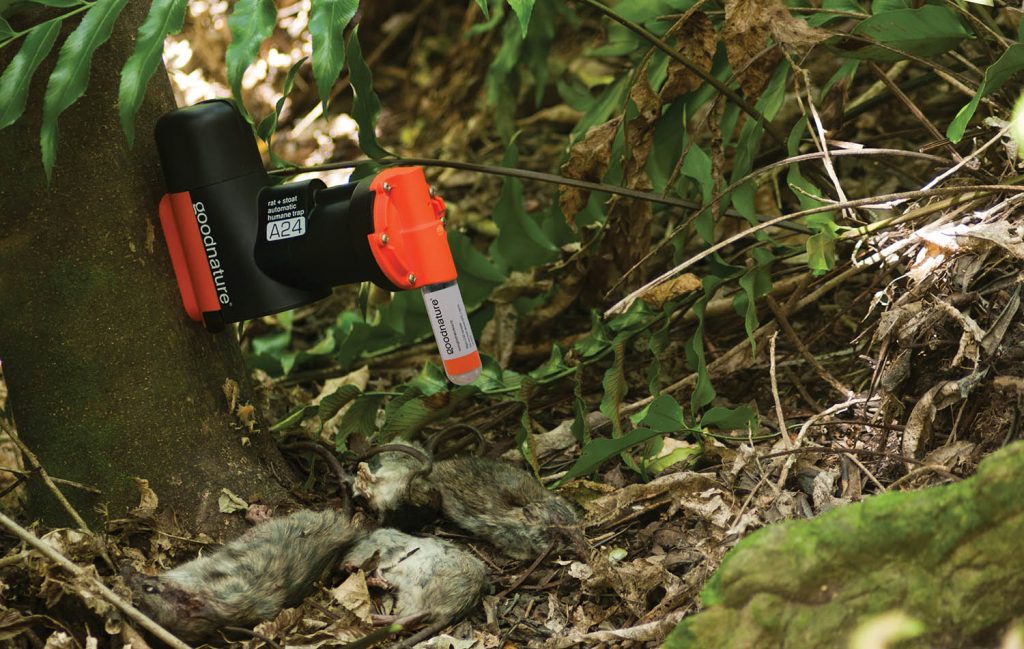Shut your trap, New Zealand!
(and what you can do to help)
Planting native trees in the garden and providing other food sources for birds is a great start. When it comes to increasing bird populations however, predator control has the most impact. The big news in 2018 is there’s now money in the budget to expand these efforts and support predator trapping at a community level.
As a country we have pledged to be Predator Free by 2050 – an initiative that “brings together central and local government, iwi, philanthropists, non-government organisations, businesses, science and research organisations, communities, land owners and individuals.”
The ‘big picture’ projects have captured the public’s attention, and recent efforts have provided a spotlight on how sustained and effective predator control can make a big difference to native bird numbers.
Predator Free Wellington aims for ‘the first predator-free capital city in the world’. The charge is lead by renowned urban ecosanctuary, Zealandia, whose fencing and predator-control programmes have allowed 18 species of native wildlife to be reintroduced to the central Wellington valley.
There’s plenty to be done at an individual and community level too. The DoC website has plenty of quality information on what’s being done, and how you can help. So too does predatorfreenz.org, where you can read up on how to get started and order some very cool traps.

Here are some ways you can contribute to creating a safer environment for our birds:
ONE: Identify the pests
As the saying goes, if you hear rats on the roof they’re likely to be mice. The same is true for possums: they’re probably rats. That’s why it’s important to first work out who’s hanging around in the garden. Tracking tunnels and chew cards can help to identify pests as well as the best locations for setting traps.
TWO: Set the trap
In any environment predators will always destroy other species if left unrestrained. It’s a grim reality of predator control that so often things come down to ‘kill or be killed’. At least there are some really effective and humane traps nowadays. Check out predatorfreenz.org’s range of easy-use traps. Even one rat trap can make a big difference to your garden bird population.
THREE: Don’t nap on the cat
Domestic cats are the ‘apex predators’ of the suburbs, and they do most of their damage at night. If you have a cat we suggest keeping them inside at this time. It is like that famous Dean Martin song about cats goes, “When the moon hits their eye, some poor bird’s pizza pie, so don’t ignore, ay?”
FOUR: Join the Neighbourhood (Nature) Watch
Community groups can apply for funding from Predator Free NZ, and you’ll also find a great interactive map here – type your location into the search bar and you’ll see where all the like-minded predator free people are.
